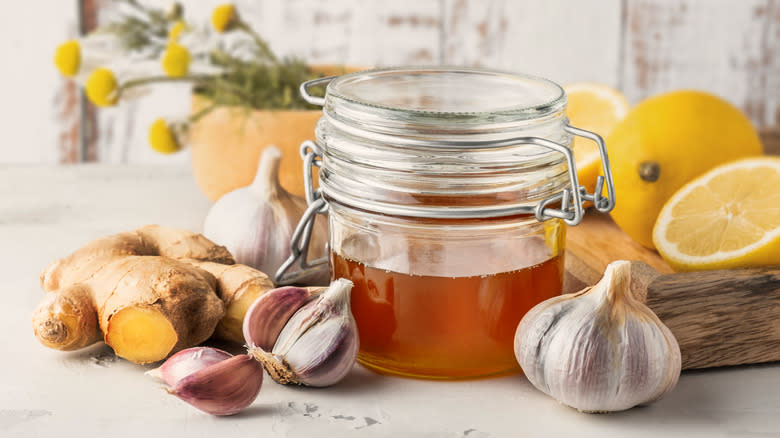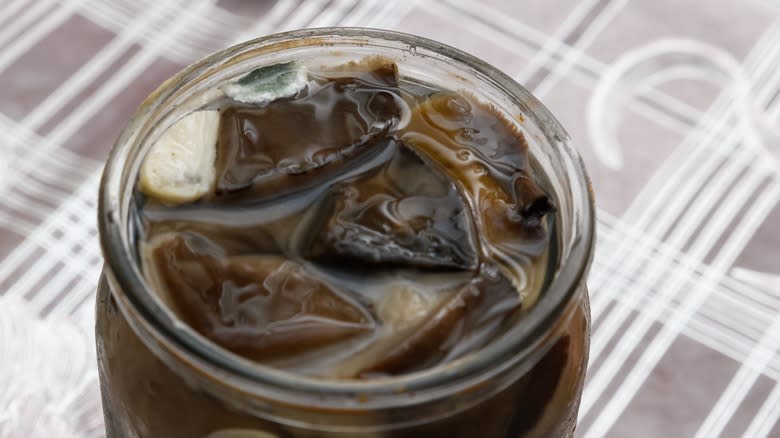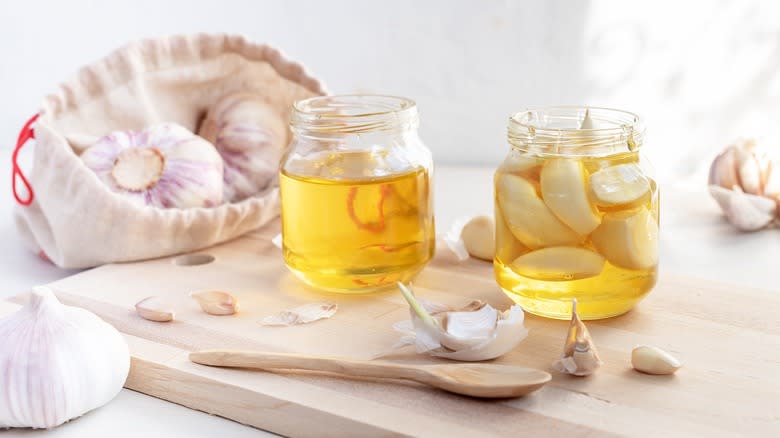When Is Fermented Garlic Honey Unsafe To Eat?

- Oops!Something went wrong.Please try again later.
Nothing on your kitchen counter will cure what's ailing you quite like a jar of fermented garlic honey. Not only is this condiment tasty in salad dressings or on toast, but it's also a virus-killing, gut-healing, antioxidant powerhouse. However, as with all fermented foods stored outside the fridge -- especially those that contain garlic -- there can be some risks if they're not handled correctly. It can be unsafe to consume garlic honey that hasn't been kept in a cool, dry place, and -- just like all honey -- it poses a danger for infants. When determining if your fermented garlic honey is safe to eat, ensure you've fermented it correctly. Then, use the evidence of your senses.
You might think that fermented garlic cloves, which have taken on a bluish or greenish hue, might be unsafe to eat, but that's not the case; they are a perfectly safe by-product of the fermentation process. Instead, look for irregularities such as crystallization or cloudiness -- these can be an indication that there's moisture in your mixture, which could pose a risk for potential contamination. Also, keep an eye (and nose) out for off smells, the presence of mold, or a mushy or slimy texture -- these are all signs that things are not well with your fermented garlic. You should be able to notice them right away.
Read more: The Best Kitchen Gadgets You Can Buy
What Is Botulism?

While your garlic honey is fermenting, make sure all the cloves are fully submerged at all times, as this creates an anaerobic environment consistent with avoiding botulism contamination. You'll want to "burp" your garlic honey after the first three days (and every other day thereafter for at least the next week) by unsealing the lid and stirring with a clean spoon. (It's okay if you see bubbles or the honey thinning out -- those things are part of the process.) When you're done, ensure the cloves are fully submerged once again. Store the jar in a cool, dry, and dark place.
You'll know the garlic honey is done fermenting when no air is released when you open the lid to burp it. This process should last around three to four weeks. Afterward, you'll want to store your fermented garlic honey in a cool, dark place, where it should be good for up to a year. After that, toss it and make a new batch.
Honey The Hero

Botulism is a toxin created by low oxygen or anaerobic environments, low sugar, low salt, and relative moisture. All of these qualities are ideal conditions for the spores of this toxin to proliferate. This is why fermented foods are an ideal environment for botulism to grow -- and to that extent, fermented garlic honey isn't much different. But honey's sugar content and considerable acidity make it difficult for the spores to develop into botulism. These spores live on and in many things -- but the right conditions are what turn a jar of fermented food into a visit to the ER.
Though there are a number of botulism cases associated with the consumption of raw honey, the evidence that there is a direct result is inconclusive. It's also been shown that fermentation does increase honey's acidity, which should help discourage nasty bugs. If you really want to be sure about the pH of your fermented garlic honey, you can always get an at-home test, and if your fermented garlic honey has a pH balance of 4.6 or lower, you should be in the clear.
Read the original article on Daily Meal.

